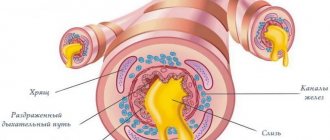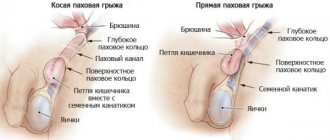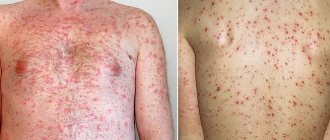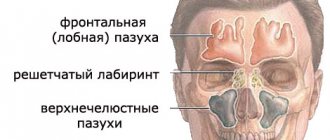A hydrocele (scientific name hydrocele) is a collection of fluid in the area between the testicle and scrotum. The disease may develop independently or appear as a concomitant of the underlying disease - tumors of the appendages and testicles, inflammation, hydatid, etc. The main symptoms of hydrocele are expressed in external enlargement of the scrotum and the presence of a feeling of fullness inside.
Diagnosis of testicular hydrocele is based on ultrasound of the scrotum, laboratory tests of PCR and sexually transmitted infections, spermogram, and tumor markers. Surgeries for hydrocele are performed only if the disease worsens the quality of life and spermatogenesis.
Hydrocele literally means protrusion of water. Hydrocele is a common pathology in urology. Men of any age are at risk. The development of testicular hydrocele in men occurs as a pathology after two years of age. Older men are much more likely to suffer from pathology than younger men.
Classification
In medicine, a disease is classified according to the cause that caused it and the severity of its course. Based on its origin, hydrocele is divided into congenital and acquired pathology.
The congenital form is associated with impaired embryo development during pregnancy. The disease can be associated with the abdominal cavity (develops due to pathologies in tissue formation) or isolated (occurs due to excessive production of serous fluid). Within a few months of a male child’s life, if the canal into the abdominal cavity is not overgrown, fluid is sent from it to the testicles.
Dropsy is not treated in children under about two years of age.
The acquired form of the disease often occurs as a complication of other ailments. It is divided into several subtypes:
- inflammatory;
- postoperative;
- post-traumatic;
- lymphostatic (develops against the background of poor lymph outflow from the scrotum);
- idiopathic (occurs due to an imbalance between secreted and absorbed fluids in the lining of the testicles).
According to the nature of the process, medicine distinguishes between acute and chronic forms of testicular hydrocele. According to the side of the disease, damage to the organ is distinguished on the right or left side, as well as bilateral pathology.
Types of surgery to remove hydrocele in men
If, based on the results of the diagnostics, the doctor decides that the patient needs surgery to remove testicular hydrocele, then he is prescribed the following tests:
- ECG;
- general analysis of urine and blood;
- fluorography;
- blood testing for HIV and hepatitis;
- biochemical and clinical blood test.
Before surgery to remove hydrocele, a man needs to cure all inflammations - caries, colds and others. Immediately before surgery, you need to take a shower and remove hair from the pubis and scrotum.
Adult patients can return home a few hours after surgery; children, in some cases, are left in the hospital for a day.
Surgical operations to remove hydrocele are of the following types:
- Sclerosis. This is a new method for Russian clinics, which is successfully used in the USA and European countries. This surgical intervention is indicated for elderly men who have lost their reproductive function. During the procedure, the fluid is sucked out of the scrotum, and in its place a sclerosing substance is injected, which prevents the production of secretions.
- Winkelmann operation. The surgeon cuts the membranes of the testicle and performs a puncture. The edges are then turned inside out and sutured behind the organ, which reduces the area of the shell. The incisions are closed with absorbable or non-absorbable sutures. In the second case, the sutures are removed 2 weeks after the removal surgery.
- Bergman's operation. In essence, this intervention is similar to the previous one, but the excess tissue is not tucked in, but cut off. Carrying out such a procedure is advisable for old hydrocele, when the membranes of the testicles thicken.
- Operation Ross. An incision in this operation is made in the lower abdomen to gain access to the appendix, which is often the cause of a congenital hydrocele in a child. The doctor excises the formation and creates a hole in the inner lining of the testicle through which the fluid will drain. The technique of this intervention is constantly being modernized in order to increase efficiency.
- Operation Lord. The doctor retracts the damaged testicle, injects Lidocaine into the spermatic cord and makes an incision as far as possible from the testicle. The fluid is evacuated, the testicle is examined for pathologies, and then raised. The shells are sutured with thread, which is then pulled tight. Next, the surgeon returns the testicle to its place and applies additional sutures.
Recovery after surgery
In the first week after surgery to remove hydrocele, men are prohibited from treating the suture themselves. The dressing can only be changed in the doctor's office. Once the sutures are removed, no special care of the surgical site is required. After surgery, the patient is recommended to wear loose underwear not made of synthetic fabrics, as they create a greenhouse effect.
After surgery, there may be swelling in the scrotal area. To eliminate swelling and pain, doctors prescribe the following medications:
- Ibuprofen or Paracetamol;
- Betadine or Chlorhexidine (to prevent infection);
- antibacterial drugs (in the presence of an inflammatory process).
Possible complications and consequences after surgery to remove hydrocele:
- wound infection;
- divergence of the threads, which can occur with excessive physical activity;
- swelling and accumulation of lymphatic fluid in the testicle;
- scar formation;
- relapse of pathology.
After surgery, men also need to adhere to a certain diet. It is necessary to avoid eating foods containing fast carbohydrates and unhealthy fats. Alcoholic beverages are also locked
It is important to avoid constipation, as it increases the pressure inside the peritoneum, so more plant fiber should be introduced into the diet
Causes and mechanism of development
The congenital form of hydrocele develops for the following reasons:
- Pregnancy with complications, pathological conditions in the development of the unborn baby.
- Premature birth, prematurity.
- Restless behavior of the newborn, expressed in constant and prolonged crying.
- Trauma to a child during childbirth.
- Applying urgent medical care to the baby (closed heart massage, artificial ventilation, etc.).
- Threat of miscarriage.
The acquired form of testicular hydrocele occurs due to:
- Inflammatory process in the testicles or their appendages.
- Traumatic mechanical impact on the organ.
- Torsion of the testicles, which disrupts the normal blood circulation in them.
- Surgery in the groin area.
- Sexual infections.
- Tumors of the genital organs.
In the body of a healthy man, the testicular membrane is capable of independently synthesizing the amount of serous fluid in it. But due to the above reasons, the production and outflow of this fluid is disrupted, and an imbalance occurs. This is the mechanism of development of the disease.
Also, inflammatory processes in the structure of the scrotum lead to compaction of the membranes of the organ, blood circulation and lymph drainage in it are disrupted. This contributes to the accumulation of excess fluid between the membranes.
Causes of hydrocephalus of the brain
The main cause of dropsy of the brain in humans is a serious deviation in the outflow of fluid from the brain, as well as its increased synthesis in the body. Such conditions can be either acquired or congenital. Most often, hydrocephalus occurs in children while they are in the womb. In such cases, the cause of the disease is an infection that the woman suffered during pregnancy.
Often, dropsy occurs in newborns after a serious infectious and inflammatory process. Due to the fact that such children do not yet have immunity, the lining of the brain is subject to extensive damage. In adults, this disease can occur against the background of the formation of blood clots and formations in the brain. Also among the causes of hydrocephalus of the brain are:
- prematurity, head injuries during childbirth;
- strong head impacts;
- infectious processes during pregnancy;
- long illnesses, due to which the infection enters the brain;
- encephalitis, meningitis;
- extensive bleeding in the brain;
- tumors of various nature;
- alcoholism.
Symptoms of hydrocele
When sick, a man may experience the following symptoms:
- nagging pain in the scrotum;
- problems with urination;
- increased fatigue;
- change in the shape of the testicles;
- pain when walking, sexual intercourse and physical activity;
- sensation of fluid when palpating the organ.
It is worth noting that if the disease has a long course, and the person also has other pathologies of the genital organs, then an increase in body temperature may be observed.
If the disease is chronic, then the above symptoms may appear suddenly and disappear on their own after some time. An acute form of testicular hydrocele requires urgent treatment.
Complications
Among the complications, the most common cases are the following:
- impaired spermatogenesis – due to compression of testicular tissue and circulatory disorders;
- testicular atrophy – against the background of a prolonged course of the disease;
- orchitis – against the background of periodic mechanical damage during sexual intercourse or physical activity;
- infection – due to the proliferation of pathogenic microflora;
- dermatitis – impaired microcirculation dries the skin of the scrotum;
- violation of sexual and urinary functions - against the background of a gigantic amount of fluid.
When to see a doctor
What to do if you have testicular hydrocele? If you find yourself experiencing discomfort in the scrotum area, you should contact a specialist and exclude self-diagnosis and, especially, self-medication.
Treatment of testicular hydrocele is a priority due to decreased fertility. Doctors place the main emphasis on early detection of the disease.
Treatment of testicular hydrocele is the responsibility of a urologist or andrologist. You can make an appointment and choose a doctor on the website, by phone or from the administrators at the clinic at the address: Moscow, 2nd Tverskoy-Yamskaya Lane, 10.
Possible complications and consequences
In the absence of therapy, improper treatment or concomitant diseases, there is a risk of hydrocele complications:
- Development of a purulent process.
- Rupture of the testicles (occurs if too much serous fluid has accumulated between the membranes of the testicles or due to mechanical impact on the organ).
- Impotence.
- Atrophy of the seminal canal.
- Scrotal hernia.
- Accumulation of blood clots in the scrotum.
- Infertility.
- Testicular cancer.
- Tissue necrosis.
Causes of acquired hydrocele
Acquired hydrocele occurs with acute or chronic inflammation of the testicle, with testicular trauma, with cardiovascular failure, with neoplasm of the scrotal organs. Surgery on the genitals can also lead to testicular hydrocele. The mechanism of hydrocele development is associated with compaction of the testicular membranes, which disrupts lymphatic drainage and inhibits microcirculation. As a result, fluid accumulates between the membranes of the testicle. Hydrocele of the testicular membranes develops without pain and without any disorders. The accumulation of fluid occurs slowly and imperceptibly, sometimes spasmodically. The enlargement of the scrotum may be small, but sometimes it reaches the size of a goose egg and even the size of a child's head. With a very large hydrocele, difficulties arise during urination and sexual intercourse. Hydrocele has a smooth surface and a dense elastic consistency, painless on palpation. The skin of the scrotum is loosely folded. The testicle usually cannot be felt, and only with a slight dropsy of the testicle can it be determined at the bottom of the swelling.
Which doctor is treating you?
If a man suspects he has hydrocele, he needs to visit a urologist. This specialist deals with the treatment of the disease in question. You should see a doctor urgently, as timely treatment will avoid the development of complications.
If testicular hydrocele is a sign of edematous syndrome, then the patient should also contact a specialized specialist depending on the cause of edema (cardiologist, nephrologist, hepatologist, endocrinologist). In some cases, an examination by an infectious disease specialist may be necessary.
When diagnosing varicocele, in addition to dropsy, a man must be examined by a vascular surgeon. If the disease requires surgical intervention, then an andrologist or sexologist will help improve the quality of sperm (for conception) or intimate life in general.
Treatment
The absence of symptoms and effects on fertility in the pathology suggests dynamic monitoring of the course of the disease. This situation can be resolved by the body on its own.
Reactive types of pathology disappear along with the provoking factor against the background of correctly selected therapy for the underlying disease.
Operations for hydrocele of the testicles are indicated in the presence of deposited fluid. Removal of hydrocele of the testicles is carried out using the following surgical methods:
- classic. Hydrocele is removed by suturing the free testicular cavity using various methods;
- minimally invasive surgery for hydrocele. Sclerotherapy, plasma scalpel, laser removal and others. Not used in the presence of inflammation and tumors. The suture after the hydrocele in these cases is the least noticeable, the effectiveness does not suffer, and the postoperative and rehabilitation periods are shortened;
- aspiration of hydrocele. It has a high percentage of relapses and complications in the postoperative period, for example, hematoma or inflammation. Today, the method exists only as palliative care in particularly severe cases with a huge amount of fluid. As an independent method, puncture has practically become obsolete.
Diagnostics
To begin with, the urologist conducts a visual examination of the patient, assesses the condition of the genital organs, and performs palpation. To make an accurate diagnosis, the doctor prescribes tests:
- Ultrasound. Using this method, you can examine the internal genital organs, calculate the volume of accumulated serous fluid, and evaluate the appearance of the testicles.
- Diaphanoscopy. Using a narrow beam of light to illuminate the scrotum to detect fluid accumulation.
- Biochemistry. It is carried out to determine the functionality of internal organs.
- Urethral swab. Done to indicate the presence of sexually transmitted infections.
- General blood and urine analysis. They are carried out to eliminate inflammatory processes in the body.
If a man is diagnosed with sexually transmitted infections, then his sexual partner should also be diagnosed, as she may also need antibacterial therapy.
Treatment of hydrocele
The choice of therapy depends on the age at which the disease is diagnosed and its form. If the hydrocele has an acquired form, it is treated surgically. The acute form of the disease due to infection is subject to antibiotic therapy.
In some cases, surgery is not possible, for example, when there are contraindications to anesthesia. Then the patient is punctured and the fluid is removed.
Can hydrocele go away on its own?
Men are interested in the question of whether hydrocele can go away on its own. Doctors believe that it is most likely for hydrocele to disappear without treatment in childhood. For most boys, it goes away on its own before a year, but it all depends on the individual characteristics of each child’s body.
In men of reproductive age, hydrocele does not disappear on its own, and doctors use a set of measures to treat the disease. However, in old age, specialists can leave everything as it is, only by implementing therapeutic measures that help reduce the patient’s discomfort and pain.
Despite the fact that medical practice has not recorded cases of spontaneous disappearance of testicular hydrocele in mature men, there are still rumors that this sometimes happened. But even in such situations, the man did not let everything take its course, but was actively treated with the help of folk remedies or radically changed his lifestyle.
Taking medications
Drug therapy is used to treat hydrocele if it is not accompanied by pathological changes in the anatomy of the organ. Among the drugs doctors often prescribe:
- Painkillers. To make the patient feel better, Analgin or Ketorol is prescribed.
- Antibiotics. To get rid of the infection, the patient must take Azithromycin or Ceftriaxone.
- Anti-inflammatory. To relieve swelling, a man is prescribed Phenylbutazone or Aponil.
- Antiseptics. They are used to treat the genitals if there is suppuration, or dropsy is caused by infection (Miramistin or Chlorhexidine).
- Local anesthetics. Novocaine injections may be prescribed to the patient to improve blood microcirculation to prevent thrombosis.
Antibiotics are taken in a course. If you stop drinking them with the first feeling of relief, you can provoke a relapse of dropsy.
Puncture
If drug therapy is powerless and surgery is contraindicated, then hydrocele is treated with puncture. Most often this happens in the idiopathic form of the disease.
The procedure is performed under local anesthesia. The doctor, using special equipment and a syringe, makes a puncture and removes the serous fluid that has accumulated between the membranes of the testicles. Next, the resulting liquid is sent for examination. It determines the presence of pus, bacteria, blood elements, etc. But the puncture has a temporary effect and is used only as a last resort, because after it is performed, the fluid can accumulate again.
Sclerosis
New minimally invasive methods of treating testicular hydrocele include sclerotherapy or sclerotherapy. It is successfully used in most European countries and has a low risk of complications. The intervention is carried out as follows:
- The specialist performs a puncture and removes accumulated fluid from the scrotum.
- Next, a sclerosing substance, for example, alcohol or betadine, is injected into the cavity of the testicular membranes. These drugs contribute to the occurrence of a non-infectious inflammatory reaction.
- Then the cavity in which the fluid accumulated becomes overgrown.
The procedure is often prescribed to older people or patients who are contraindicated for surgery.
Surgery and rehabilitation
Surgery is prescribed if drug therapy is ineffective, or if the patient has deviations in the anatomy of the genital organs that arose as a complication of the disease. This type of treatment includes three stages :
- preparatory;
- operating;
- rehabilitation.
The preparatory stage consists of passing the necessary tests and examinations, following a special diet, and stopping medications.
In medical practice, several types of surgical interventions have been developed to remove testicular hydrocele. They are performed under local or general anesthesia. On average, the operation lasts about 1.5 hours.
The main types of surgery to remove hydrocele in men:
- According to Wilkelman. The patient is given general anesthesia, the pathological testicle is removed to remove the serous fluid. Next, its capsule is turned inside out and sutured. If necessary, place a drainage and apply a bandage.
- Operation Lord. It is carried out if the organ has changed significantly in size, although there is not much excess fluid in it. The surgeon makes an incision into the water sac, then corrugates the testicular membrane. This surgical method is used if a man is at risk of developing thrombosis and swelling.
- According to Bergman. Intervention is done if the patient has a large accumulation of fluid and significant changes in the shape and structure of the testicle. The surgeon makes an incision on the surface of the scrotum, removes fluid and affected tissue, and places a drain, which remains with the patient until the stitches are removed.
The rehabilitation period takes about a month. If the patient follows all the recommendations of the treating specialist, then there are no consequences after surgery.
The doctor may prescribe the patient the following medications:
- Painkillers (Tempalgin). It is prescribed if a man experiences severe pain after surgery.
- Antibiotics (Amoxiclav, Cefazolin). Drugs in this group are needed to avoid wound infection.
- Anticoagulants (Troxerutin or Heparin). Medicines are prescribed to improve local blood circulation and reduce the risk of thrombosis.
- Antiseptics (Chlorhexidine). The product is used to treat sutures after surgery.
If a patient has a tendency to develop thrombosis, he must take anticoagulants. Otherwise, he may develop a varicocele after surgery.
For a faster recovery, a man after removal of hydrocele should adhere to some rules:
- Maintain bed rest for the first few days.
- Eat porridge, low-fat soups, fresh fruits and steamed vegetables.
- Avoid sexual activity for 1-1.5 months.
- Limit physical activity.
- Avoid alcohol and visits to the sauna or steam bath.
- Monitor your bowel movements to avoid constipation or diarrhea.
- Treat seams.
- Wear a bandage and perform hygiene procedures only in the shower, not in the bath.
If the above rules are observed during the rehabilitation period, the man recovers completely after a month and a half and can again return to his usual lifestyle.
Traditional methods
Traditional methods of treatment can be used for hydrocele as an auxiliary therapy. The most famous are the following:
- Chamomile. The flowers of the plant should be washed with cold water, crushed with a blender, the resulting mass should be placed on a bandage made of sterile gauze and applied to the sore spot. Make a compress several times a day.
- A decoction of medicinal herbs. Sage, chamomile, jaundice and currant leaves are crushed, poured with 300 milliliters of hot water, infused for an hour, filtered. The finished infusion is taken for a month, 1/4 cup before meals.
- Infusion of horseradish and lemon. Grind the root of the plant, pour 150 g of the resulting mass with juice squeezed from three lemons. Let the mixture sit for about an hour, then strain. The finished drug is taken 2 teaspoons twice a day.
- Pea compress. Pour half a tablespoon of peas into 500 ml of high-quality light beer, let it brew, then simmer over low heat for about half an hour. Cool the broth, moisten a gauze bandage in it and apply it to the sore area, secure it. Make a compress twice a day for a month.
- A decoction of coltsfoot and clover. Sweet clover flowers and coltsfoot leaves are taken one tablespoon at a time and poured into 300 ml of boiling water. Then the container with the healing liquid should be wrapped in a warm towel and allowed to brew. The cooled mixture can be drunk three large spoons at least five times a day.
- A medicine made from parsley leaves and milk. Place 800 g of clean parsley leaves in a saucepan and pour in a liter of milk. Place the container in the oven to simmer for 3-4 hours. When the volume of milk is reduced by half, remove the pan. The composition is cooled and filtered. The finished drug should be taken 15-30 ml every hour. The resulting composition is enough for one day, the next it needs to be prepared again.
- Pumpkin juice. The patient needs to drink 1/2 cup of freshly squeezed vegetable juice every day.
- Compress of wine and agrimony herbs. 100 g of the plant is poured into a liter of wine, the mixture is boiled for five minutes. Then cool and filter. The gauze is moistened with the prepared composition and a bandage is applied to the sore spot and held for 30 minutes. The compress is applied twice a day.
Symptoms and signs
Symptoms of testicular hydrocele directly depend on the volume of accumulated fluid. The smaller the amount of fluid, the less pronounced the signs of the disease. Significant accumulation of fluid is accompanied by asymmetrical enlargement of the scrotum, skin tension and a change in normal color.
Palpation shows a homogeneous and painless structure of the testicles, but there are a number of difficulties in determining the contours. When the amount of liquid becomes more than 500 ml, nagging pain and discomfort during physical activity are observed.
As the volume of the testicles increases in men, it affects erectile functions and the process of urination. A communicating hydrocele decreases after sleep. Multilocular hydrocele in men looks like an hourglass.
Reactive pathology clinically manifests itself in the form of the underlying disease. If there is vascular torsion, severe pain, redness of the skin and an increased size of the scrotum appear.
General symptoms of testicular hydrocele:
- swelling of the testicles;
- severe pain;
- skin hyperemia, regional enlargement of lymph nodes - in the later stages of the pathology;
- violation of palpation.
Features of hydrocele in children
Hydrocele can appear during the newborn period and is observed in 7-12 percent of male babies. The pathology, as mentioned above, is caused by embryological disorders.
Doctors do not treat children under one year old; they use wait-and-see tactics. In most cases, hydrocele disappears on its own as the peritoneal process obliterates. If the disease progresses, the child is prescribed surgical treatment. This occurs at the age of 1.5-2 years. If the timing of surgical treatment is met and the operation is performed correctly, then hydrocele of the testicles in childhood will be eliminated forever.
More information about the causes of hydrocele in children, as well as about the treatment of the pathology, is written here.
Features of hydrocele in the elderly
Older men may also suffer from this condition. It can be chronic. The cause is often old injuries or a predisposition to the disease from birth. Another cause of hydrocele in older patients may be a previous operation to remove a varicocele or inguinal hernia. In this situation, lymph accumulation is possible between the membranes of the testicle.
Hydrocele of the testicle can also affect bedridden patients.
If an elderly man does not experience acute pain due to this disease, then the urologist does not take radical treatment measures. The condition can be normalized by taking diuretics. It is also allowed to use folk remedies, follow a low-calorie diet high in fruits and vegetables, and exclude salt, fats and alcohol from the menu, as they contribute to fluid retention in the body.
Treatment of hydrocele
If there is a threat of testicular atrophy and severe pain, surgical intervention is performed.
If dropsy has developed against the background of an inflammatory disease of the scrotal organs and the volume of fluid between the membranes is small, then the leading direction of treatment is to eliminate the underlying disease: antibacterial, anti-inflammatory, decongestant therapy. In this case, the patient is recommended to rest and wear a special support bandage for the scrotal organs - a suspensor. If the underlying pathology is completely cured, the structure of the testicular tissue is restored, blood supply and lymphatic drainage are normalized - the volume of fluid between the membranes gradually decreases to a normal amount. Such cases of hydrocele are quite rare and in most cases this type of disease does not require surgical treatment.
Direct indications for surgery are severe pain and the threat of testicular atrophy.
The operation performed for testicular hydrocele is called hydrocelectomy, of which there are several options today. The main methods of surgical intervention are Lord's, Bergmann's and Winkelmann's operations. All are simple interventions performed under local anesthesia, and each is used in specific clinical situations. The type of operation is determined in each specific case directly during the surgical intervention.
In cases of voluminous hydrocele and in the case of old hydrocele, the Bergman operation is preferable: the surgeon dissects the scrotum and layer-by-layer testicular membranes in the area of the anterior surface of the tumor-like formation; the testicle, together with the main membrane, is brought out into the wound, after which the liquid accumulated between the sheets of the membrane is pumped out using a syringe. After this, the membrane is opened, excised if necessary, and sutures are applied to its remains.
The testicle is immersed again in the scrotum, the wound is sutured with catgut and, in order to prevent recurrence of dropsy, a small rubber drainage is left, which must be removed after a few days. After the operation is completed, an ice pack is applied to the wound area.
The sutures dissolve within 10 days. 10 days after the operation, the patient returns to a full life, but for another 1-1.5 months he should avoid sexual contact and heavy physical labor, and it is also recommended to wear tight swimming trunks or a jockstrap for a month. In addition, swelling of the scrotal tissue may persist for several months. This is a normal phenomenon, however, if against this background the patient notices an increase in body temperature, deterioration in general condition, redness in the area of the operation site, he should seek medical help as quickly as possible.
If surgery is contraindicated for a patient (for example, due to old age) or he categorically refuses surgical intervention, in order to temporarily alleviate his condition, puncture of the dropsy is performed with suction of the contents. This procedure does not have a therapeutic effect, since after some time the liquid between the membranes accumulates again.
It is worth saying a few words about a relatively new method of treating hydrocele: sclerosis of the testicular membranes. Its essence, like the essence of puncture, is to suction the contents of the testicular membranes, but during sclerotherapy, after removing the liquid, special substances are introduced into the resulting cavity - sclerosants, under the influence of which the synthesis of testicular membranes of their secretions is significantly reduced.
A single procedure does not have the desired effect, so it is recommended to carry it out several times. A side effect of the sclerosing agent is a damaging effect on testicular tissue, so this treatment method is contraindicated for young patients, and is carried out mainly for older men who refuse surgery.
Useful video material about testicular hydrocele in men
Information about hydrocele from a practicing specialist from the Moscow Doctor clinic can be found by watching the following video:
Doctors believe that compliance with preventive measures, if not eliminate the development of testicular hydrocele, significantly reduces the risk. If you suspect a pathology, a man needs to urgently visit a doctor. If detected early, medication can be used. If there is a need for surgical treatment, the patient should carefully follow the preparation rules.
Cost of surgery for hydrocele
The cost of treatment for hydrocele in our clinic is 55 thousand rubles. The cost of treatment for hydrocele includes surgery, anesthesia, a day in the clinic, dressings, and postoperative observation. We also simultaneously perform surgical treatment for bilateral hydrocele. After the operation to remove the hydrocele, no relapses were observed. Disability time is 2-3 days.
Where to have surgery for hydrocele
You can get more detailed information by calling.











